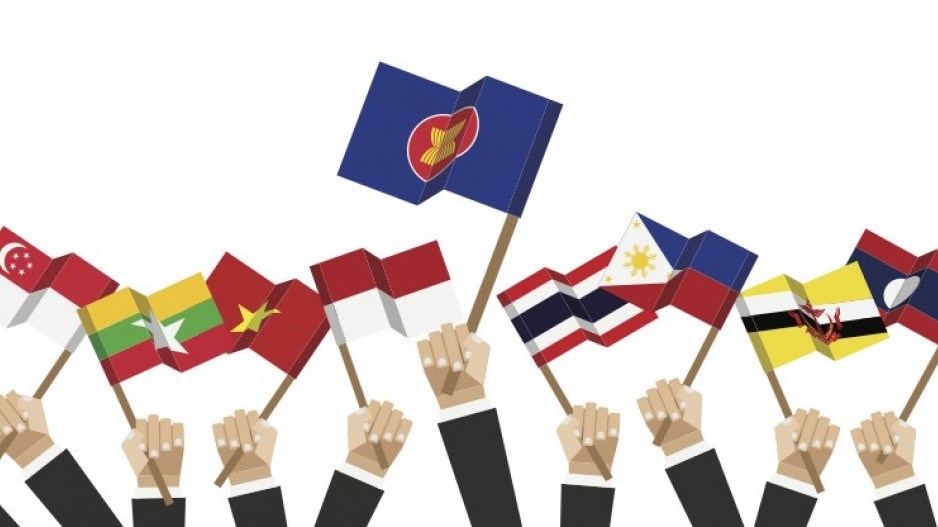With Canada hitting trade headwinds from its two largest trade partners – a protectionist White House in the United States and a freeze in relations with China over the Huawei affair – Ottawa has been touting diversification as a way to cope.
While markets like India and Latin America have garnered some attention, observers are now increasingly looking at a deeper link with Southeast Asia as part of the answer.
Global supply chains have been gradually shifting from China to the Association of Southeast Asian Nations (ASEAN) as the former’s meteoric economic rise has also meant a corresponding hike in labour costs, prompting manufacturers to look at markets like Vietnam, the Philippines, Thailand and Indonesia.
Canada’s trade with the 10 ASEAN states amounted to $25.1 billion in 2018, and the region continues to see GDP growth of about 5%. Jeff Reeves, vice-president of research at the Asia Pacific Foundation of Canada, said recent indicators point to even greater growth than the preliminary estimates.
“Interestingly, with the work we are doing with regards to tracking trade, some of our fastest-growing markets for Canada in terms of finding investment and trade are the smaller Southeast Asian nations,” Reeves said.
“Vietnam is one, and Malaysia is another. So while we are seeing a proportional decrease in traditional partners, a lot of the growth in Canadian interconnectivity in the Asia-Pacific region is coming from Southeast Asia.”
A big part of whether ASEAN plays a bigger role in Canadian trade will depend on a potential free-trade agreement (FTA). Ottawa concluded preliminary exploratory FTA talks with ASEAN last September. Officials planned to meet later this year to discuss their next moves.
“Exploratory discussions have provided ASEAN and Canada with a better understanding of each other’s FTA approach and expectations for a possible ASEAN-Canada FTA,” a joint statement from Ottawa and ASEAN said last September.
For Indonesian ambassador to Canada Abdul Kadir Jailani, the potential for Canada’s trade with ASEAN and its most populated country is immense. He noted Indonesia is projected to become the world’s fourth-largest economy by 2045.
In order for that to happen, however, more people-to-people ties are needed, with or without an FTA, Jailani said. That means more student exchanges and cultural contact, as well as Canadian involvement in ASEAN topics like freedom of navigation in the South China Sea.
“I think Vancouver will be a big part of the effort to boost our relationship,” he said. “We know Canada isn’t a member of the ASEAN Summit, but it doesn’t mean Canada cannot be more involved…. ASEAN is a very important part of the Asia-Pacific, and we hope Canada will look to adopt a more comprehensive strategy that encompasses security as well as the economy.”
The profitability of Southeast Asia as a market for Canada will also depend very specifically on which Canadian products facing a squeeze in the United States or China will entice portions of the ASEAN market, said Asia Pacific Foundation distinguished fellow Hugh Stephens, who is also principal of consultancy Trans-Pacific Connections.
The Phase 1 trade deal between Washington and Beijing may provide some hints of where the relationship between the two megamarkets is headed, but if China promises to buy more U.S. products at the expense of its spending on Canadian products, ASEAN’s attractiveness will come when the market can absorb the Canadian products that have been displaced.
“If U.S. lobster displaces Canadian lobster, or U.S. pork displaces Canadian pork, then alternative markets have to be sought,” Stephens said. “Given the large number of Muslims in ASEAN, clearly ASEAN is not an attractive alternative market for pork, for example. On the other hand, lobster producers may have to sell elsewhere other than China.”
But even if a market can be found in ASEAN for products like lobsters, logistics remain a real challenge, he added.
“If those lobsters are now not going to be sold in China, but to Singapore, how do they get there, and at what price?” Stephens said. “At the end of the day, no one market can substitute directly for another. The point is that given the trade distortions introduced by the U.S.-China deal, trade has to be diversified, and ASEAN is part of that.”
Carlo Dade, director of Canada West Foundation’s Trade and Investment Centre, added that Canada already has access to ASEAN, as Vietnam, Malaysia, Singapore and Brunei are all part of the Comprehensive and Progressive Agreement for Trans-Pacific Partnership (CPTPP), and ASEAN markets are becoming increasingly integrated. As a result, an FTA with ASEAN may be more valuable not as a door opener to Southeast Asia, but as a way of gaining more regional support to enter the Regional Comprehensive Economic Partnership (RCEP).
“The RCEP will include countries to which we do not have WTO-plus access in Asia,” Dade said, noting that deals like RCEP and the CPTPP create trade blocs with rules of origin that give Canadian products access to all countries in the bloc. “You want those advantages throughout Asia. Combining the RCEP and CPTPP gives you access to much of Asia.
“Some countries in the RCEP are going to be difficult to negotiate bilaterals – India, China, Indonesia, etc.,” Dade added. “So even though the RCEP is a low-ambition agreement, it’s arguably better than no agreement with those countries.”




